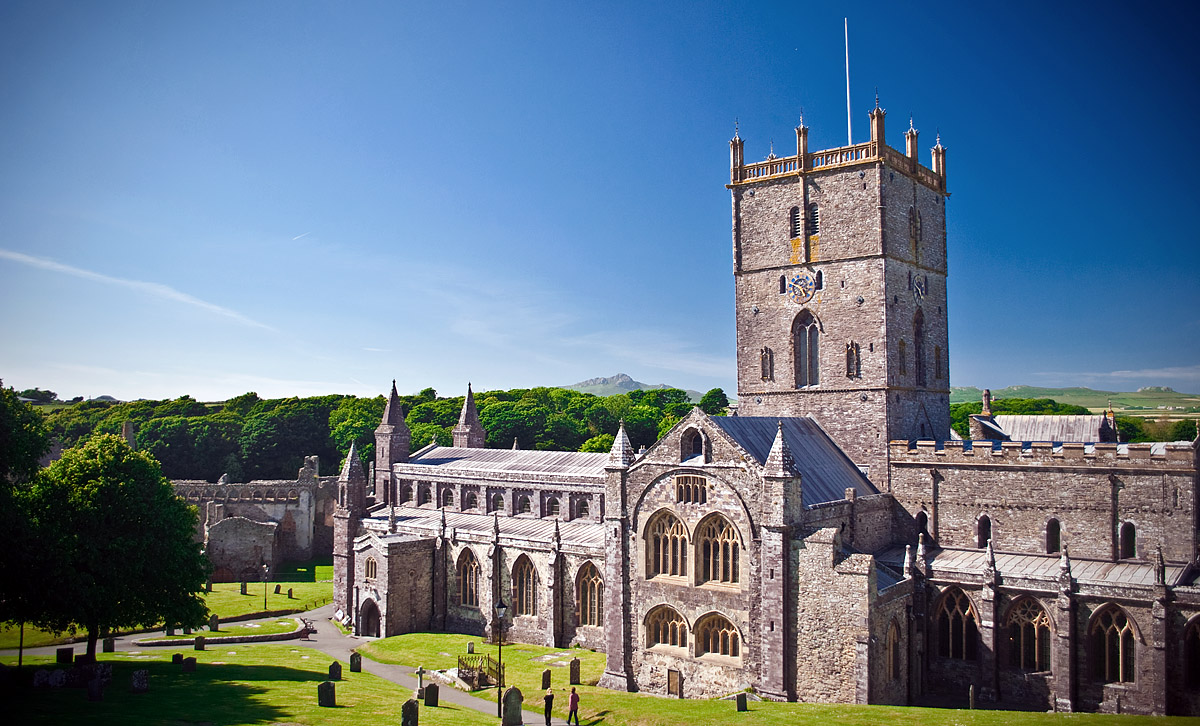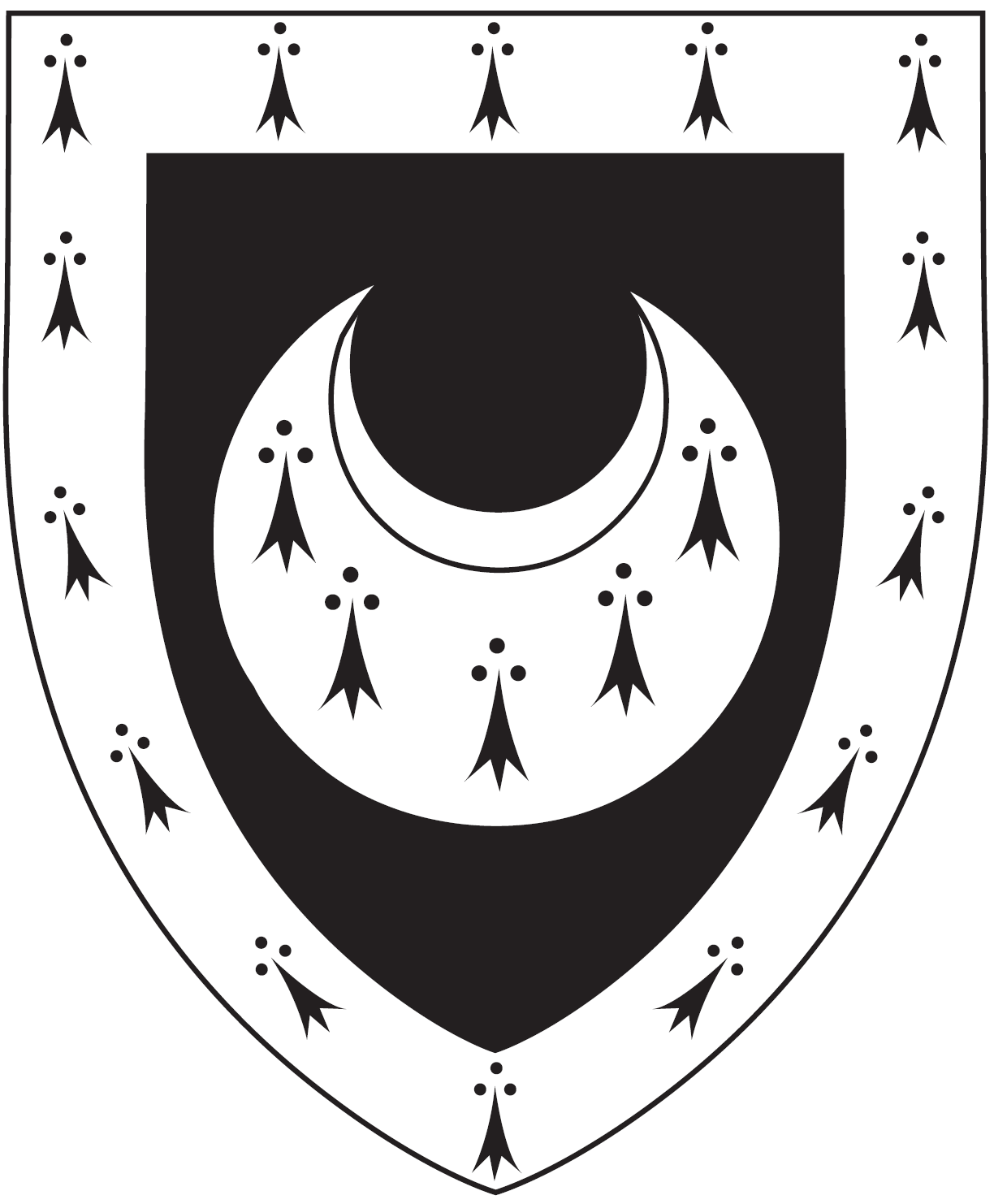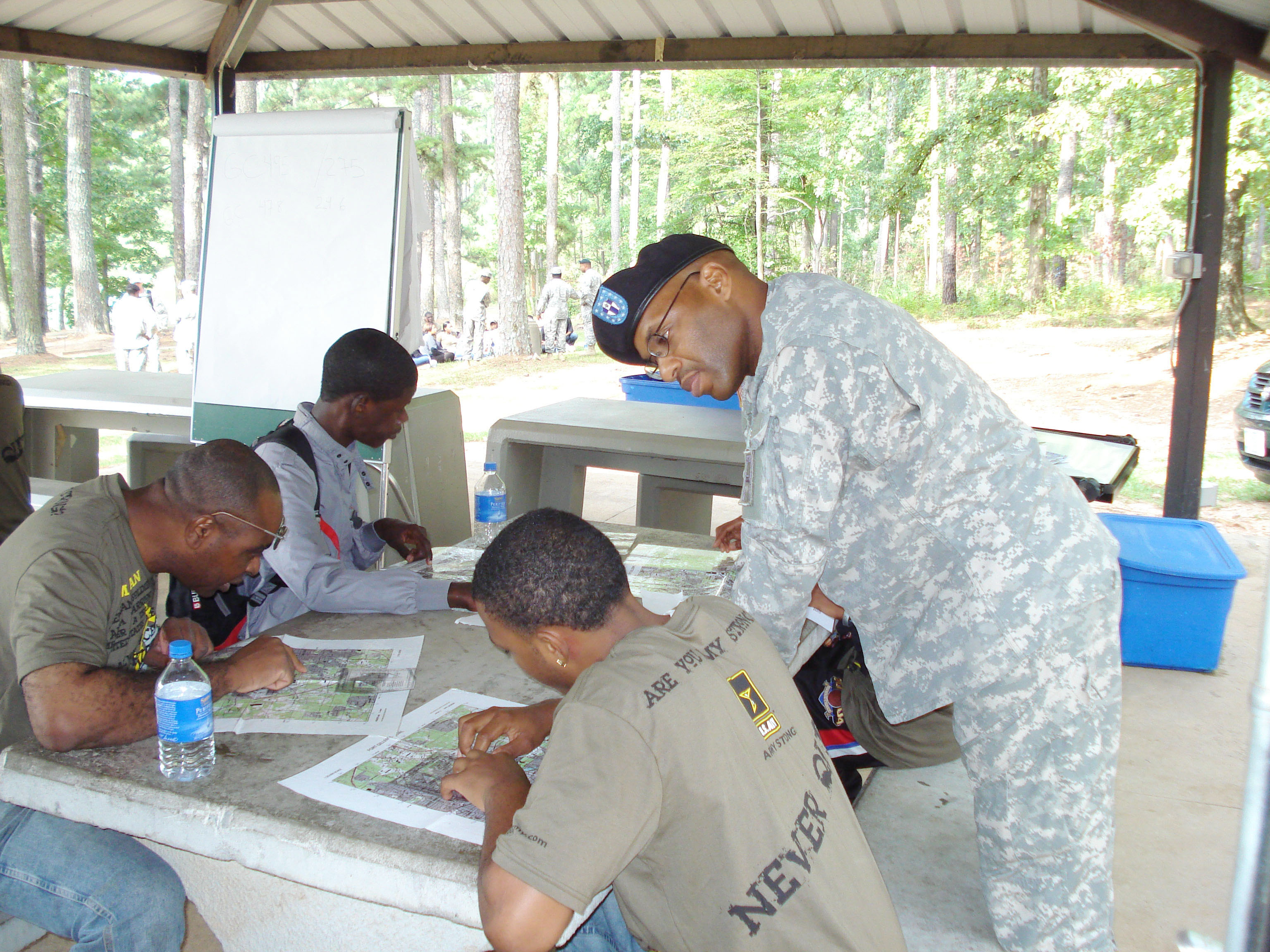|
Thomas Fastolf
Thomas Fastolf, sometimes spelt Fastolfe (died June 1361), was an English canon lawyer and Bishop of St David's from 1352 until his death. Probably educated at Cambridge and then overseas, he held the degree of Doctor of Laws and his first career was as a canon lawyer in Avignon, which was then the seat of the Papacy. He is credited as the first identifiable reporter of cases in the papal court known as the Rota. As Fastolf advanced in the service of the Avignon popes, he gained a series of preferments in the British Isles, concluding with the bishopric of St David's. Early life Fastolf was one of three sons of Thomas Fastolf, of Great Yarmouth, Norfolk, who all became lawyers. His brothers were Nicholas (died 1330), ancestor of Sir John Fastolf, generally believed to have inspired Shakespeare's character of Sir John Falstaff, and Lawrence. His mentor was William Bateman, bishop of Norwich, and he was probably an undergraduate at the University of Cambridge, as others were w ... [...More Info...] [...Related Items...] OR: [Wikipedia] [Google] [Baidu] |
Doctor Of Laws
A Doctor of Law is a degree in law. The application of the term varies from country to country and includes degrees such as the Doctor of Juridical Science (J.S.D. or S.J.D), Juris Doctor (J.D.), Doctor of Philosophy (Ph.D.), and Legum Doctor (LL.D.). By country Argentina In Argentina the Doctor of Laws or Doctor of Juridical Sciences is the highest academic qualification in the field of ''Jurisprudence''. To obtain the doctoral degree the applicant must have previously achieved, at least the undergraduate degree of Attorney. (Título de Abogado). The doctorates in Jurisprudence in Argentina might have different denominations as is described as follow: * Doctorate in Law (Offered by the University of Buenos Aires, NU of the L, and NU of R) * Doctorate in Criminal Law * Doctorate in Criminal Law and Criminal Sciences * Doctorate in Juridical Sciences * Doctorate in Juridical and Social Sciences (Offered by the NU of C) * Doctorate in Private Law (Offered by the NU of T) * ... [...More Info...] [...Related Items...] OR: [Wikipedia] [Google] [Baidu] |
Appellate Court
A court of appeals, also called a court of appeal, appellate court, appeal court, court of second instance or second instance court, is any court of law that is empowered to hear an appeal of a trial court or other lower tribunal. In much of the world, court systems are divided into at least three levels: the trial court, which initially hears cases and reviews evidence and testimony to determine the facts of the case; at least one intermediate appellate court; and a supreme court (or court of last resort) which primarily reviews the decisions of the intermediate courts, often on a discretionary basis. A particular court system's supreme court is its highest appellate court. Appellate courts nationwide can operate under varying rules. Under its standard of review, an appellate court decides the extent of the deference it would give to the lower court's decision, based on whether the appeal were one of fact or of law. In reviewing an issue of fact, an appellate court ordi ... [...More Info...] [...Related Items...] OR: [Wikipedia] [Google] [Baidu] |
Canterbury
Canterbury (, ) is a cathedral city and UNESCO World Heritage Site, situated in the heart of the City of Canterbury local government district of Kent, England. It lies on the River Stour. The Archbishop of Canterbury is the primate of the Church of England and the worldwide Anglican Communion owing to the importance of St Augustine, who served as the apostle to the pagan Kingdom of Kent around the turn of the 7th century. The city's cathedral became a major focus of pilgrimage following the 1170 martyrdom of Thomas Becket, although it had already been a well-trodden pilgrim destination since the murder of St Alphege by the men of King Canute in 1012. A journey of pilgrims to Becket's shrine served as the frame for Geoffrey Chaucer's 14th-century classic '' The Canterbury Tales''. Canterbury is a popular tourist destination: consistently one of the most-visited cities in the United Kingdom, the city's economy is heavily reliant upon tourism. The city has been occ ... [...More Info...] [...Related Items...] OR: [Wikipedia] [Google] [Baidu] |
Lord Chief Justice Of Ireland
The Court of King's Bench (or Court of Queen's Bench during the reign of a Queen) was one of the senior courts of common law in Ireland. It was a mirror of the Court of King's Bench in England. The Lord Chief Justice was the most senior judge in the court, and the second most senior Irish judge under English rule and later when Ireland became part of the United Kingdom. Additionally, for a brief period between 1922 and 1924, the Lord Chief Justice of Ireland was the most senior judge in the Irish Free State. History of the position The office was created during the Lordship of Ireland (1171–1536) and continued in existence under the Kingdom of Ireland (1536–1800) and the United Kingdom of Great Britain and Ireland. Prior to the Supreme Court of Judicature Act (Ireland) 1877, the Lord Chief Justice presided over the Court of King's/Queen's Bench, and as such ranked foremost amongst the judges sitting at common law. After 1877, the Lord Chief Justice assumed the presidency ... [...More Info...] [...Related Items...] OR: [Wikipedia] [Google] [Baidu] |
Serjeant-at-law
A Serjeant-at-Law (SL), commonly known simply as a Serjeant, was a member of an order of barristers at the English and Irish Bar. The position of Serjeant-at-Law (''servientes ad legem''), or Sergeant-Counter, was centuries old; there are writs dating to 1300 which identify them as descended from figures in France before the Norman Conquest, thus the Serjeants are said to be the oldest formally created order in England. The order rose during the 16th century as a small, elite group of lawyers who took much of the work in the central common law courts. With the creation of Queen's Counsel (or "Queen's Counsel Extraordinary") during the reign of Elizabeth I, the order gradually began to decline, with each monarch opting to create more King's or Queen's Counsel. The Serjeants' exclusive jurisdictions were ended during the 19th century and, with the Judicature Act 1873 coming into force in 1875, it was felt that there was no need to have such figures, and no more were created. The ... [...More Info...] [...Related Items...] OR: [Wikipedia] [Google] [Baidu] |
Bishop Of Norwich
The Bishop of Norwich is the ordinary of the Church of England Diocese of Norwich in the Province of Canterbury. The diocese covers most of the county of Norfolk and part of Suffolk. The bishop of Norwich is Graham Usher. The see is in the city of Norwich and the seat is located at the Cathedral Church of the Holy and Undivided Trinity. The bishop's residence is Bishop's House, Norwich. It is claimed that the bishop is also the abbot of St Benet's Abbey, the contention being that instead of dissolving this monastic institution, Henry VIII united the position of abbot with that of bishop of Norwich, making St Benet's perhaps the only monastic institution to escape ''de jure'' dissolution, although it was despoiled by its last abbot. East Anglia has had a bishopric since 630, when the first cathedral was founded at Dommoc, possibly to be identified as the submerged village of Dunwich. In 673, the see was divided into the bishoprics of Dunwich and Elmham; which were r ... [...More Info...] [...Related Items...] OR: [Wikipedia] [Google] [Baidu] |
William Bateman (bishop)
William Bateman ( – 6 January 1355) was a medieval Bishop of Norwich. Life Bateman was the son of William Bateman, a Norwich citizen and bailiff who was an M.P. He was born about 1298. He had two elder brothers, both of whom attained eminence. The firstborn, Sir Bartholomew Bateman, of Flixton, Suffolk, was knighted by Edward III for his martial prowess in the French wars. The second became an abbot. William, the third son, received his education in his native city, probably in the school attached to the priory of Norwich. He graduated at Cambridge University in Civil and Canon Law. In his thirtieth year, he was collated by Bishop William de Ayreminne to the archdeaconry of Norwich on 8 December 1328. He was introduced by Ayreminne to the court of Pope John XXII at Avignon. The young civilian's ability soon manifested itself, and the pope endeavoured to bind to himself one who seemed likely to fill an influential place in English politics. By his desire, Bateman took up hi ... [...More Info...] [...Related Items...] OR: [Wikipedia] [Google] [Baidu] |
Mentor
Mentorship is the influence, guidance, or direction given by a mentor. A mentor is someone who teaches or gives help and advice to a less experienced and often younger person. In an organizational setting, a mentor influences the personal and professional growth of a mentee. Most traditional mentorships involve having senior employees mentor more junior employees, but mentors do not necessarily have to be more senior than the people they mentor. What matters is that mentors have experience that others can learn from. According to the Business Dictionary, a mentor is a senior or more experienced person who is assigned to function as an advisor, counsellor, or guide to a junior or trainee. The mentor is responsible for offering help and feedback to the person under their supervision. A mentor's role, according to this definition, is to use their experience to help a junior employee by supporting them in their work and career, providing comments on their work, and, most crucially, ... [...More Info...] [...Related Items...] OR: [Wikipedia] [Google] [Baidu] |
Sir John Falstaff
Sir John Falstaff is a fictional character who appears in three plays by William Shakespeare and is eulogised in a fourth. His significance as a fully developed character is primarily formed in the plays ''Henry IV, Part 1'' and '' Part 2'', where he is a companion to Prince Hal, the future King Henry V of England. Falstaff is also featured as the buffoonish suitor of two married women in ''The Merry Wives of Windsor''. Though primarily a comic figure, Falstaff embodies a depth common to Shakespeare's major characters. A fat, vain, and boastful knight, he spends most of his time drinking at the Boar's Head Inn with petty criminals, living on stolen or borrowed money. Falstaff leads the apparently wayward Prince Hal into trouble, and is ultimately repudiated after Hal becomes king. Falstaff has since appeared in other media, including operas by Giuseppe Verdi, Ralph Vaughan Williams, and Otto Nicolai, and in Orson Welles' 1966 film ''Chimes at Midnight''. The operas focus on his ... [...More Info...] [...Related Items...] OR: [Wikipedia] [Google] [Baidu] |
Sir John Fastolf
Sir John Fastolf (6 November 1380 – 5 November 1459) was a late medieval English landowner and knight who fought in the Hundred Years' War. He has enjoyed a more lasting reputation as the prototype, in some part, of Shakespeare's character Sir John Falstaff. Many historians argue, however, that he deserves to be famous in his own right, not only as a soldier, but as a patron of literature, a writer on strategy and perhaps as an early industrialist. Lineage and family Coming from a minor gentry family in Norfolk, John Fastolf was born on 6 November 1380 at the manor house of Caister Hall, a family possession which he later turned into Caister Castle, but of which little now remains aside from the water-filled moat. The son of Sir John Fastolf (died 1383) and Mary Park (died 2 May 1406), he belonged to an ancient Norfolk family originally seated at Great Yarmouth, where it is recorded from the thirteenth century. Notable members of the family in earlier generations incl ... [...More Info...] [...Related Items...] OR: [Wikipedia] [Google] [Baidu] |
Nicholas Fastolf
Nicholas Fastolf (??? - 1330) was an English-born judge who was a leading member of the early Irish judiciary; according to the most reliable source, he was the first judge to hold the office of Lord Chief Justice of Ireland. He was probably the direct ancestor of Sir John Fastolf, who is generally thought to have inspired Shakespeare's character Falstaff. Family He was born in Norfolk, one of the four sons of Thomas Fastolf of Reedham and Great Yarmouth.Ball F. Elrington ''The Judges in Ireland 1221-1921'' John Murray London 1926 Vol. 1 p.66 His brothers were Thomas Fastolf, Bishop of St David's, Lawrence Fastolf, auditor of the prerogative court of Canterbury, and Alexander, who was twice bailiff of Great Yarmouth.Baker, J.H. "Thomas Fastolf" ''Oxford Dictionary of National Biography'' Nicholas' wife was called Cicely or Cecilia: they had several children. Elrington Ball believed that he was the direct ancestor of Sir John Fastolf. Hugh Fastolf, who was MP for Great Yarmouth ... [...More Info...] [...Related Items...] OR: [Wikipedia] [Google] [Baidu] |
Lawyer
A lawyer is a person who practices law. The role of a lawyer varies greatly across different legal jurisdictions. A lawyer can be classified as an advocate, attorney, barrister, canon lawyer, civil law notary, counsel, counselor, solicitor, legal executive, or public servant — with each role having different functions and privileges. Working as a lawyer generally involves the practical application of abstract legal theories and knowledge to solve specific problems. Some lawyers also work primarily in advancing the interests of the law and legal profession. Terminology Different legal jurisdictions have different requirements in the determination of who is recognized as being a lawyer. As a result, the meaning of the term "lawyer" may vary from place to place. Some jurisdictions have two types of lawyers, barrister and solicitors, while others fuse the two. A barrister (also known as an advocate or counselor in some jurisdictions) is a lawyer who typically specializ ... [...More Info...] [...Related Items...] OR: [Wikipedia] [Google] [Baidu] |


.jpg)





